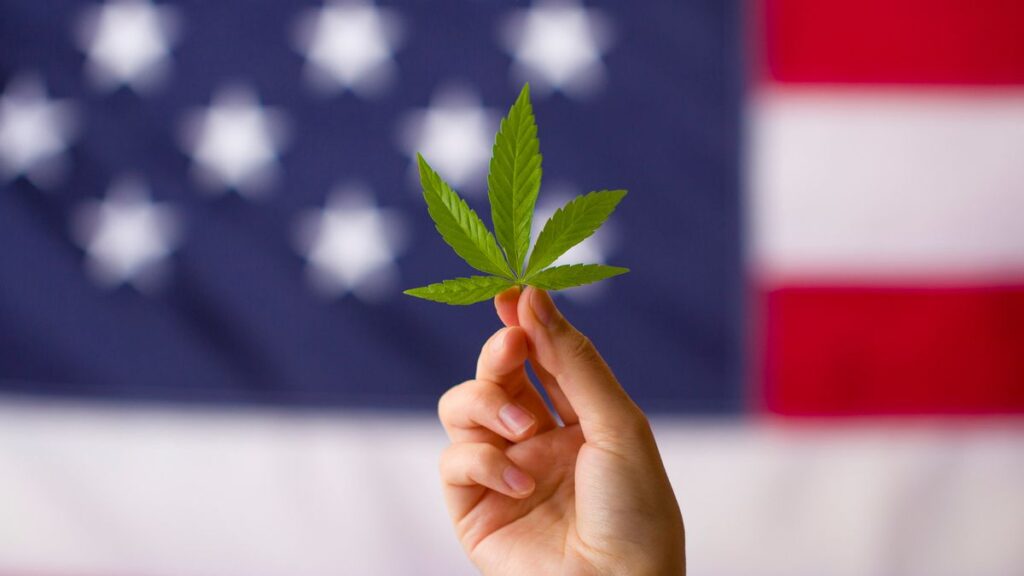It’s been 10 years since voters in Washington and Colorado approved ballot measures to legalize the use of recreational cannabis for adults over the age of 21.
Since 2014, 22 additional states have passed similar laws allowing for the sale of recreational cannabis in their state, while other states have passed various laws allowing for the medical use of the drug. As of 2024, only 11 states remain where cannabis is fully illegal under state law. Despite the drug still being listed under the Controlled Substances Act as a Schedule 1 drug cannabis has increased in public acceptance over the last past decade.
A Pew Research poll from March 2024 found that 88% of Americans believe that cannabis should legal for medical or recreational use, with 32% saying that it should only be legal for medical use and 11% saying the drug should be illegal altogether. A Gallop Poll found support for legalization to be even higher with 70% of Americans saying it should be legalized for recreational use nationwide.
- FDA greenlights study of marijuana as PTSD treatment for veterans
- Diners in California can smoke cannabis at Dutch-style cafes starting next year
Gallup found that support for legalization has grown significantly over the past 50 years. After cracking the 50% threshold in 2013 it has steadily rose only dipping once from 54% in 2013 to 51% in 2014. This is in stark contrast to how Americans felt about the drug in past generations as only 12% of Americans supported legalization in 1968 and even as early back as 2005 only 36% of Americans supported legalization.
The issue of legalization appears to also transcend party lines, despite the majority of states where the drug has been legalized being Democrat-leaning states, and all of the states where full prohibition remains in place being Republican-leaning states, with the notable exception of Wisconsin which is considered a swing state by many metrics.
The same Pew Research poll found that only 17% of those who describe themselves as Republicans think cannabis should be illegal altogether. 42% said they support legalization for recreational use and 40% for medical. This is compared to 72% of those who describe themselves as Democrats saying they support legalization for recreational use.
This increased acceptance of the drug has not only been on the state level as in 2023 President Joe Biden pardoned issued pardons to those convicted under federal law of simple possession of marijuana. This pardon did not apply to state-level convictions as those would have to come from the governors of individual states.
“Just as no one should be in a federal prison solely due to the use or possession of marijuana, no one should be in a local jail or state prison for that reason, either,” Biden said.
The Drug Enforcement Administration announced in May of this year that they would move to reschedule cannabis from a Schedule 1 substance to a Schedule 3, although it is unclear how the incoming Trump administration will handle federal cannabis policy. Canada followed the growing trend in the U.S. in 2018 legalizing the drug for recreational use nationwide.
Use among nearly every age demographic has increased over the last 10 years, according to the National Institute of Health. Even just a decade ago years ago most people seeking to buy the drug would often purchase from a black market usually through a local dealer. Usually, these were friends of friends or some would even go as far as to approach strangers and inquire if they had any cannabis for sale or knew someone who did. That has all changed with the rise of retail cannabis stores where anyone over the age of 21 in most legal states can purchase it from licensed distributors.
According to the National Institute of Drug Abuse cannabis use among young adults ages 19 to 30 reached its highest levels ever recorded, with 44% of those surveyed saying they use cannabis daily. This is up from 35% in 2017 and 28% in 2012.
Record highs were also reached among those aged 35 to 50 with 28% of those surveyed saying they use cannabis daily up from 17% in 2017 and 13% in 2012.
Since widespread legalization in the U.S. cannabis use among adolescents has also significantly increased. According to the NIH nearly half of all 12th graders (44%), one-third of 10th graders (33%), and one in seven 8th graders (14%) reported reported using cannabis at some point in their lifetime in 2018.
Despite increased legalization arrests for marijuana possession still account for 30% of all drug arrests in the United States, according to the FBI’s annual Uniform Crime Report. After peaking in 2007 at 870,000 marijuana-related arrests across the country, arrests have steadily decreased. Police arrested 227,108 arrests for marijuana-related crimes, 92% of which were simple possession of the drug.
H/T: www.themirror.com



